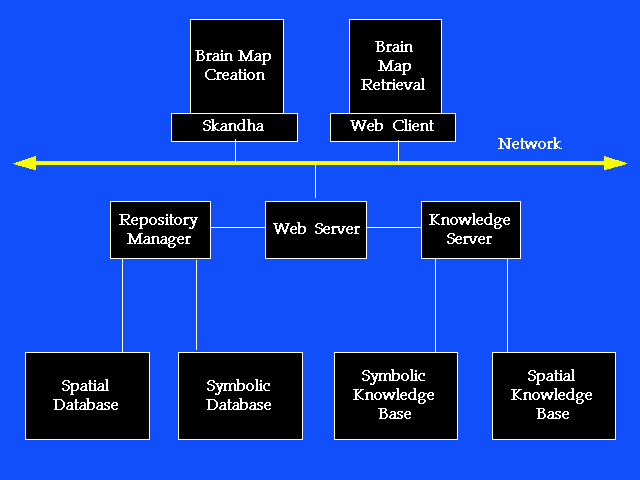

Structural information framework. Authoring and end user client programs (top row) access a set of structural information resources (bottom row) via a set of information servers (middle row). The brain map creation tool shown in the first slide is implemented in our local Skandha program (top left box). Renderings and maps are saved in the spatial database (bottom left), whereas metadata about these files are recorded in the symbolic database (bottom second from left), which is currently implemented in a standard set of relational tables. The two forms of data are coordinated by the Repository Manager (left middle row), which is a set of CGI programs that are accessible from Web clients (top right box), such as that shown in the second slide. The Web Server also accesses our developing spatial and symbolic knowledge bases, in the form of symbolic terminology and constraint-based cortical shape models, via the Knowledge Server.
Current work is aimed at improving the reconstruction and visualization tools, and integrating them in the information framework. We will then use the tools to correlate stimulation mapping data with non-invasive modalities such as fMRI, and to study the relationship between cortical surface variation and variation in the language sites.